Japan’s manhole covers have become a delightful treasure-hunting mania for tourists, blending art, culture, and community in a unique way. As travelers continue to seek out these colorful designs, they not only enrich their own experiences but also contribute to the preservation and promotion of local heritage. So, the next time you find yourself in Japan, don’t forget to look down—you may just stumble upon a hidden masterpiece waiting to be discovered!
*
As a long-time resident of Japan for over 32 years, I’ve developed a deep appreciation for the country’s unique cultural treasures – the OIJ (Only/Original in Japan). One of the most captivating of these has been the intricate and artfully designed manhole covers that dot the streets of towns and cities across the nation.
*
Inspired by their beauty and significance, I wanted to share this hidden gem with the world. Last year in December, I selected some manhole designs around Japan and sent messages to the respective authorities.
*
In early January of this year, I received permission from city and prefectural offices to begin designing and marketing replica manhole cover products as a way to boost tourism and express my gratitude for being welcomed into the Japanese way of life.
The process of mass producing these replicas has certainly been a challenging one. It’s taken until just this month of July for the first batch of products to be completed. But now, I’m thrilled to finally be able to bring these one-of-a-kind pieces of Japanese craftsmanship to a global audience.
*
By offering these replica manhole covers, my hope is to not only celebrate Japan’s rich cultural heritage, but also provide travelers with a unique and memorable souvenir that captures the essence of this fascinating country. It’s my small way of giving back after so many years of enjoying all that Japan has to offer.
History of Japan's Manhole Cover
Manhole covers in Japan have a long and interesting history. The first modern manhole covers in Japan were introduced in the late 19th century during the Meiji period, when Japan was rapidly industrializing and modernizing its infrastructure.
Early manhole covers were relatively simple, often just plain metal discs. However, over time, the designs became more elaborate and distinctive. In the 1920s and 1930s, many municipalities began incorporating their city seals or emblems into the manhole cover designs.
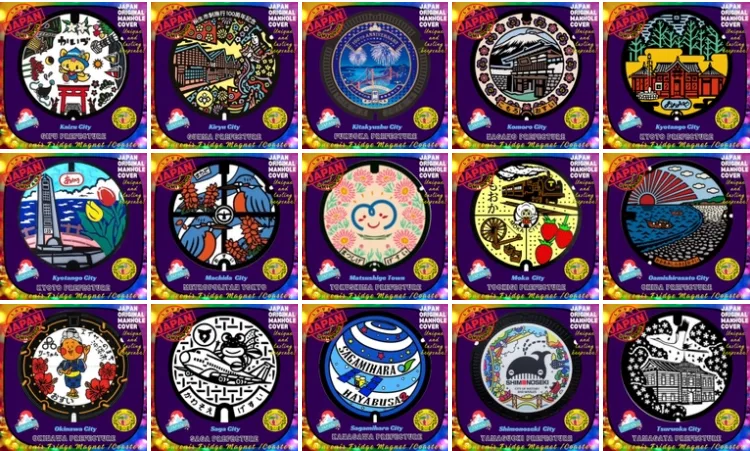
After World War II, manhole cover designs became even more creative and diverse. Many cities started using their manhole covers as a way to showcase local culture, history, or notable landmarks. Designs ranged from geometric patterns to depictions of animals, plants, or famous buildings.
In the 1980s and 1990s, the trend of artistic manhole covers really took off. Municipalities held design contests to create unique and eye-catching covers. This led to an explosion of creative and whimsical designs across Japan.
Today, manhole covers have become an iconic part of Japan’s urban landscape. They are seen as both functional infrastructure and works of art. Many tourists seek out and photograph the elaborate manhole covers as they explore Japanese cities. The diversity and creativity of these designs have made them a source of national pride and cultural identity.
Japan is renowned for its unique cultural traditions and attention to detail, but one of the country’s most intriguing obsessions may come as a surprise – a deep fascination with manhole covers. Far from being mere functional infrastructure, these humble metal discs have become the subject of a nationwide mania, captivating the hearts and imaginations of both locals and visitors alike.
Beneath the surface of Japan’s bustling streets lies a world of artistry, history, and community pride. Each manhole cover is a work of art, featuring intricate designs that reflect the local culture, geography, and even historical events. From the delicate cherry blossoms of Kyoto to the powerful waves of coastal towns, these covers have become canvases for celebrating Japan’s diverse identity.

But the story of Japan’s manhole cover mania goes far beyond mere aesthetics. These unassuming objects have become symbols of civic pride, with towns and cities vying to create the most unique and eye-catching designs. They have also become a source of community engagement, with residents and tourists alike seeking out the most interesting and elusive covers, creating a treasure hunt-like experience that connects people to their local environment.
In this article, we will delve into the rich history and cultural significance of Japan’s manhole cover mania, exploring how these humble objects have become a beloved and integral part of the country’s cultural landscape. From their origins as functional infrastructure to their current status as highly sought-after collectibles, the story of Japan’s manhole covers is a fascinating glimpse into the nation’s unwavering attention to detail and its ability to transform the mundane into the extraordinary.
The trend of artistic manhole covers in Japan can be traced back to the 1980s, when a few municipalities began experimenting with designs that went beyond the standard plain metal covers.

Origins of the Artistic Manhole Covers
The origins of this phenomenon can be attributed to a few key factors:
- Desire for civic pride and identity
In the 1980s, as Japan’s economy was booming, many local governments sought ways to differentiate their towns and cities and foster a sense of civic pride among residents. Designing unique manhole covers became a way to showcase the local culture and heritage, creating a visual identity for the community.
- Appreciation for craftsmanship
Japan has a long-standing tradition of craftsmanship and attention to detail, which is deeply rooted in the country’s cultural values. The creation of intricate manhole cover designs allowed municipalities to showcase their artisanal skills and pride in their workmanship.
- Influence of the “Manhole Summit”
In 1985, the first “Manhole Summit” was held in Nagoya, where representatives from various municipalities gathered to discuss the potential of manhole covers as a medium for artistic expression. This event helped to catalyze the trend and inspired more towns and cities to start designing their own unique covers.
- Collaboration between artists and engineers
The creation of these artistic manhole covers often involved close collaboration between local artists and municipal engineers. This partnership allowed for the integration of creative designs with the practical requirements of the infrastructure, resulting in visually stunning yet functional covers.

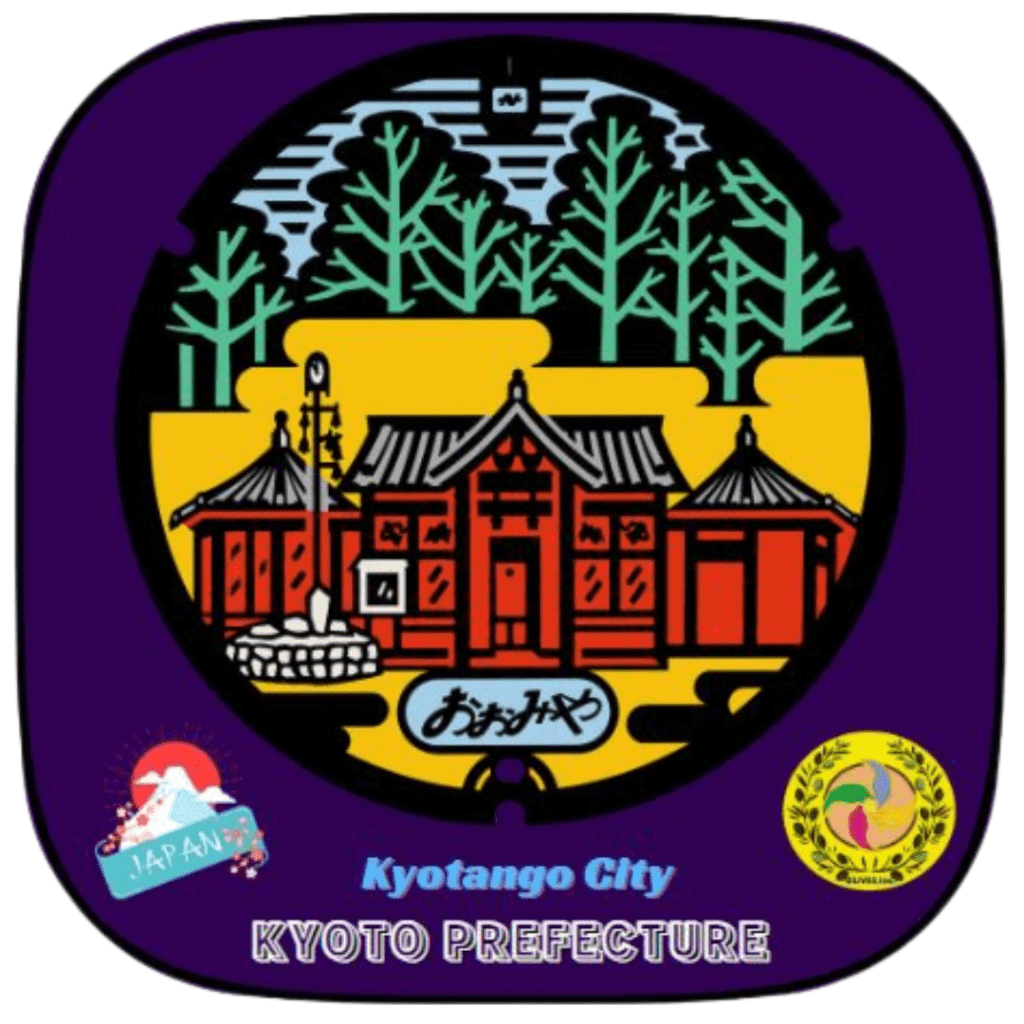
As the trend gained momentum, more and more municipalities began to embrace the idea of artistic manhole covers, leading to a proliferation of unique designs across the country. Today, these covers have become a beloved part of Japan’s cultural landscape, with enthusiasts and collectors seeking out the most interesting and rare examples.
The evolution of artistic manhole covers in Japan is a testament to the country’s ability to transform the mundane into the extraordinary, and to find beauty and meaning in the smallest of details.
Types of Manholes in Japan
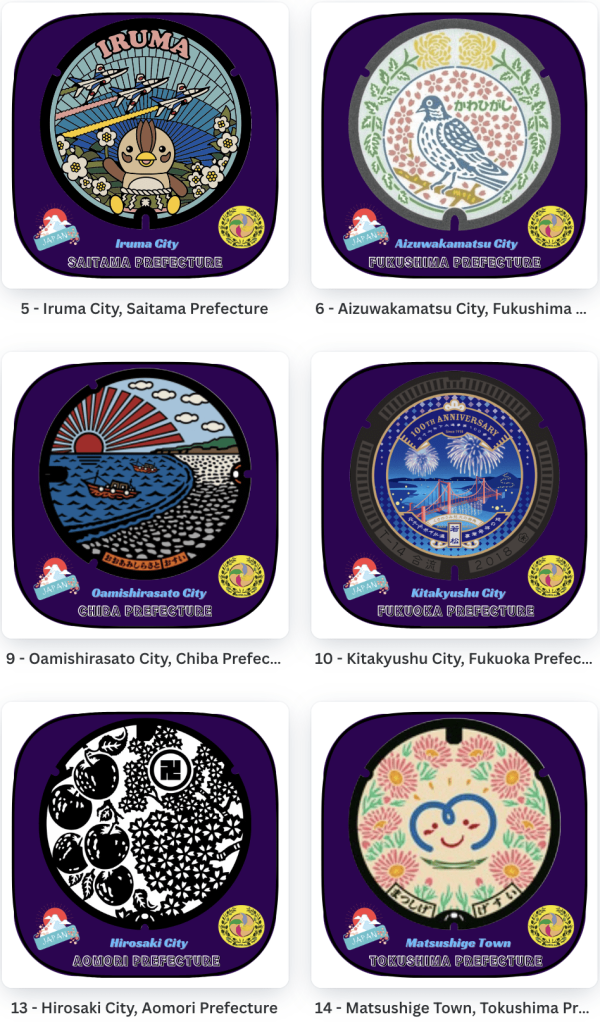
There are several different types of manhole covers used in Japan, each serving a specific purpose. Here are some of the main categories:
- Standard Manhole Covers
– These are the most common type of manhole covers, found on streets and sidewalks.
– They often feature the city’s seal or emblem in the design.
- Utility Manhole Covers
– These covers provide access to underground utility lines, such as electricity, telecommunications, or water.
– The designs may indicate the type of utility accessed.
- Storm Drain Manhole Covers
– These covers allow access to storm drainage systems.
– They may have perforations or grates to allow water flow.
- Decorative Manhole Covers
– These covers feature elaborate, artistic designs that showcase local culture, history, or landmarks.
– Many cities hold design contests to create unique decorative manhole covers.
- Commemorative Manhole Covers
– These covers are created to commemorate special events, anniversaries, or achievements.
– They often feature limited-edition designs.
- Manhole Covers with Braille
– Some manhole covers have raised Braille patterns to assist visually impaired pedestrians.
- Illuminated Manhole Covers
– These covers incorporate LED lights to illuminate the manhole at night, improving visibility and safety.
The diversity of manhole cover designs in Japan reflects the country’s rich cultural heritage and the pride that municipalities take in their local identity. These covers have become an integral part of the urban landscape and a unique aspect of Japanese street art.
Process of Selecting Manhole Designs & Manufacturing
The process of selecting designs and manufacturing Japanese manhole covers involves several steps:
*
Design Selection
– Many municipalities in Japan hold design contests to create new and unique manhole cover designs.
– These contests are open to the public, allowing artists, designers, and even everyday citizens to submit their proposals.
– A panel of judges, often comprising local government officials, designers, and community representatives, evaluates the submissions and selects the winning designs.
– The winning designs are then approved for production and installation within the city.
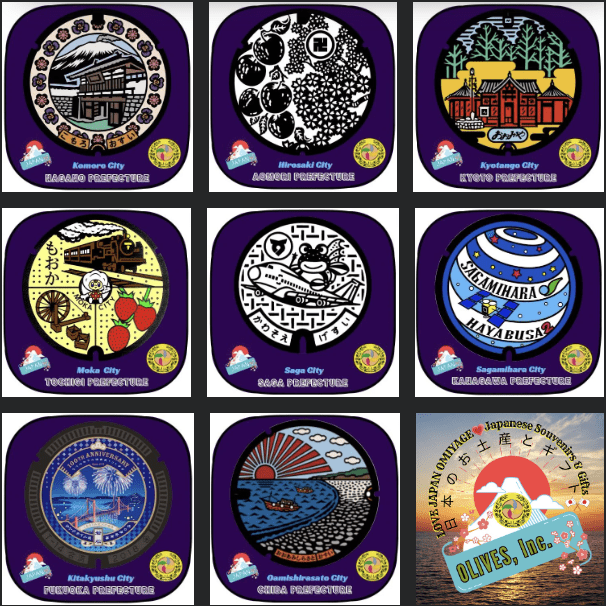
Regional and Cultural Representation
– The selected designs are often meant to represent the local culture, history, or natural features of the specific city or region.
– Designs may feature iconic landmarks, traditional motifs, or symbols that are meaningful to the local community.
– This ensures that the manhole covers serve as a reflection of the city’s unique identity and heritage.
*
Manufacture and Production
– The actual manufacturing of Japanese manhole covers is typically handled by specialized foundries and metalworking companies.
– These companies have the necessary expertise and equipment to cast, mold, and finish the intricate manhole cover designs.
– Many of the foundries are located in industrial hubs or regions that have a long history of metalworking, such as Saitama Prefecture or Aichi Prefecture.
– The production process involves techniques like sand casting, metal stamping, and precision machining to create the final manhole cover products.
Quality Control and Installation
– Before installation, the manufactured manhole covers undergo rigorous quality control checks to ensure they meet safety and durability standards.
– Local government agencies or public works departments are responsible for overseeing the installation of the manhole covers within the city’s infrastructure.
– The covers are carefully placed and secured to provide safe and reliable access to the underground utilities they serve.
This collaborative process between local governments, design communities, and specialized manufacturers allows Japan to maintain its unique and diverse manhole cover designs, which have become an integral part of the country’s urban landscape and cultural identity.
So while an exact total count is not available, it’s clear that Japan has an immense number of manholes across the country, numbering in the millions, to support its extensive underground infrastructure and utilities. The manhole network has grown alongside Japan’s development over the past century and a half.
Japan Manhole Locations & Related Resources
Gundam Manhole Cover Locations: https://g-manhole.net/
Introduction to Japan Manhole Cover Cards: https://www.isi-education.com/info/20220613/
Manhole Cover Cards: https://www.gk-p.jp/mhcard/
Manhole Card Distribution: https://play.google.com/store/apps/details?
Pokemon Manhole Cover Locations: https://local.pokemon.jp/en/manhole
Sailor Moon Manhole Cover Locations: https://www.timeout.com/…/tokyo-is-getting-sailor-moon…
Tourists on Japan Manhole Covers: https://soranews24.com/…/japanese-manhole-covers…/
*
*
Japan Manhole Souvenirs & Gifts (Love Japan Omiyage)
(1) OLIVES, Inc. www.oliveskk.com/shop
(2) FIlipina Edupreneur www.filipinaedupreneur.com/shop
(3) Amazon Store https://www.amazon.co.jp/stores/page/17F3FB71-6453-4F36-9DBB-66CA0C8434EE
SUBSCRIBE to Filipina Edupreneur for exclusive access to a world of inspiration, knowledge, and opportunities in Japan & beyond. Join our vibrant community and stay updated on the latest posts, tips, and special offers. Just click this link: FILIPINA EDUPRENEUR



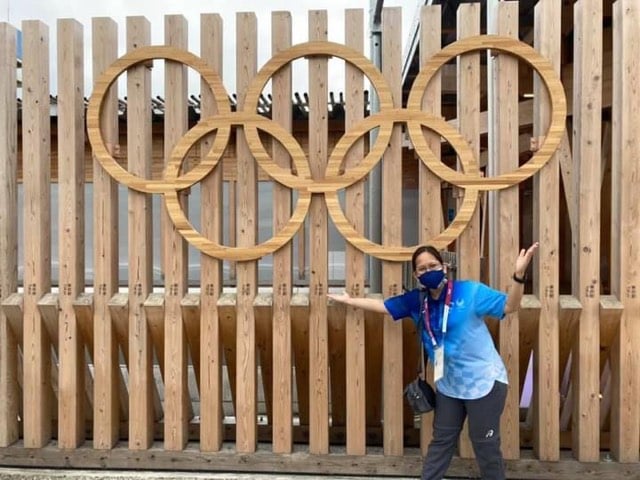
[…] Related article: Japan Manhole Covers: Like a Treasure-Hunting for Tourists Now! […]